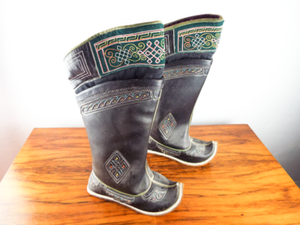English riding or Hunter classes judge the development and the type of ponies appropriate for work over walls. An average show tracker division would incorporate classes over the wall just as “Tracker under Saddle” or “level” classes (some of the time called “hack” classes), in which the pony is decided on its presentation, habits, and development without bouncing. Trackers have a long, level kneed jog, here and there called “daisy shaper” development, an expression recommending a decent tracker could cut daisies in a home when it finds its sweet spot out.

A pony with a great hopping structure eats its knees up and bounces with a decent bascule. It ought to likewise have the option to jog or run with control while having a step sufficiently long to take an appropriate number of steps over a given distance between walls. Tracker classes contrast from jumper classes, in which they are not coordinated, and equitation classes, in which the rider’s presentation is the core interest. Tracker style depends on fox chasing, so bounces in the tracker division are generally more regular tones than the leaps in a jumper division.
Western riding developed from the steers working and fighting customs brought to the Americas by the Spanish Conquistadors, and both gear and riding style advanced to meet the functioning necessities of the rancher on farms in the American West.
Despite the fact that the contrasts between English and Western riding seem emotional, there are numerous likenesses. The two styles expect riders to have a strong seat, with the hips and shoulders adjusted over the feet, with hands-free of the seat in order to try not to upset the equilibrium of the pony and meddling with its exhibition.
The material utilized in riding boots:
Generally, English riding boots are made of smooth calfskin, ordinarily, cowhide, or incidentally pigskin, and most show boots remain accordingly because of the exemplary look. In any case, engineered calfskin, vinyl, and different materials are getting more normal. Nature of calfskin differs, with gentler, better quality expanding the worth of the boot. For formal wear, patent calfskin is once in a while seen, especially in jodhpur boots intended for saddle seat horse show classes held after 6:00 pm, when formal clothing might be worn in particular sorts of rivalry.
For easygoing riding, riders regularly wear all around worn show boots, yet in addition may exploit new boot plans displayed after the athletic shoe or climbing boot that have been made, utilizing space-age engineered materials and breathable materials to make what basically is a “sneaker with a heel. The vamp is sewn on top of the quarters. (A priest tie boot additionally secures with a clasp, yet the quarters are sewn on top of the vamp.) The lash is ordinarily in two sections, each joined to the vamp. The clasp end is connected to the inboard side and expands most of the way around the lower leg, counterclockwise on the correct boot. The free end is appended to the detachable side and broadens totally around the lower leg, clockwise on the correct boot. There is commonly a circle sewn to the rear of the boot that both tie finishes can be gone through.

